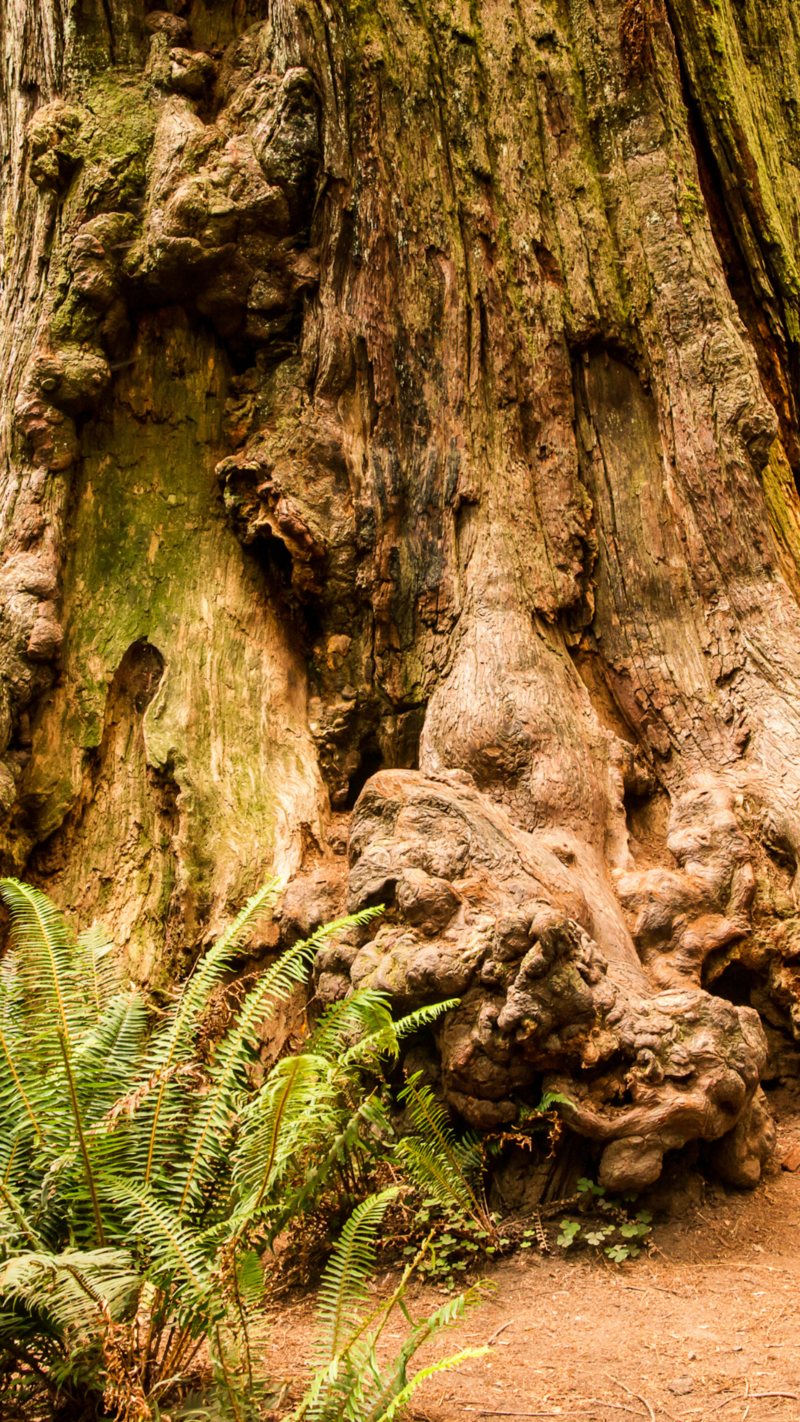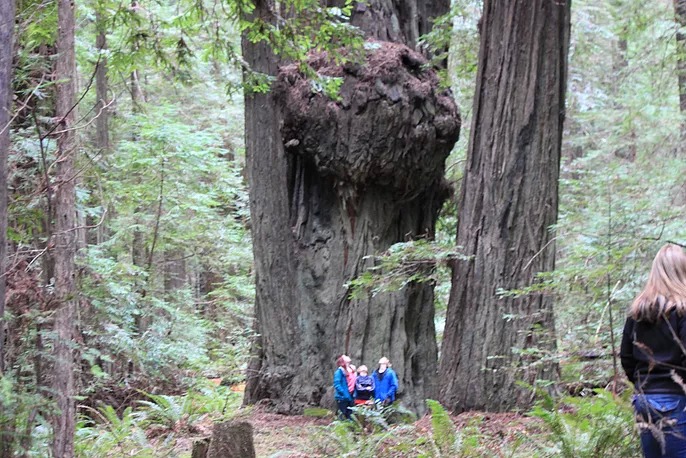
Redwood fascinates the creative and inquisitive mind in all its forms. Not only do these trees have an astonishing size, longevity, and prehistoric ecology, but they also have tremendous regenerative properties. We are also charmed by the amazing grain and color of the wood. For this blog entry, I am going to discuss one of the redwood’s most astonishing properties: the live burl.
Live Redwood Burls
First, I should explain that all burl, whether it grows on the side of a tree, at the base of the tree, in the root system, or anywhere else, is alive at least at some point. What sets a live burl apart is that it keeps growing after it has been cut. Root burl, crown burl, and stump burl can all produce new shoots of life, but not usually once they are cut from the host tree.
Live burls are usually spotted growing on the side of the tree and can grow to amazing sizes. I have personally seen them as large as a Volkswagen Bug. However, they are usually much smaller, often about coffee table size and more commonly the size of an apple.

Once cut, they can grow new redwood shoots for many years. They are often sold as novelty items to tourists, and people have reported keeping them alive in every state in the US. Just keep the temperature moderate, avoid too much sunlight, and give your live burl plenty of water – that’s all they need to thrive. Eventually, if you plant them they will grow into a tree.
Harvesting Live Burls
Most of the burls that are sold in stores are harvested from private lands, where second and third-generation forests have produced millions of these small growths. Most grow around the stumps of former old-growth or second-growth trees. Once cut, they simply heal and start growing again.
That said, larger burls take much longer to mature. For this reason, they are far less common, and generally only show up on the market from larger logging operations. However, sometimes these burls come from illegal harvesting. This mostly happens on private land but makes the news when it happens on public lands, and for good reason. When buying any burl wood, live or not, it’s always important to check the source to make sure it was legally and ethically harvested.
The Challenge of Sourcing Live Burl
The live burl is one of redwood’s many means of natural regeneration. Though harvesting burls from live trees leaves scars, it seldom if ever actually harms the tree when done properly. Of course, if you remove a massive burl from a tree, the site is not only an ugly one but will likely cause the tree to have severe scarring and need prolonged treatment to stay healthy and alive.
I have all but stopped buying live burls, and most shops I know of buy only from responsible sources. Even the Muri Woods National Monument’s gift shop sells live burls. However, illegal activity is prevalent enough that anyone buying live burls has to be careful and always check the source. Live burls can be difficult to source legally – this is part of what makes them so rare and desirable. However, they are one of nature’s most amazing gifts, and ethically sourced burls can be a great way to bring home a small piece of California’s magnificent redwood forests.
Tags: burl wood, burl wood grain, Fireplace Mantels, reclaimed redwood, redwood burl, sustainable materials